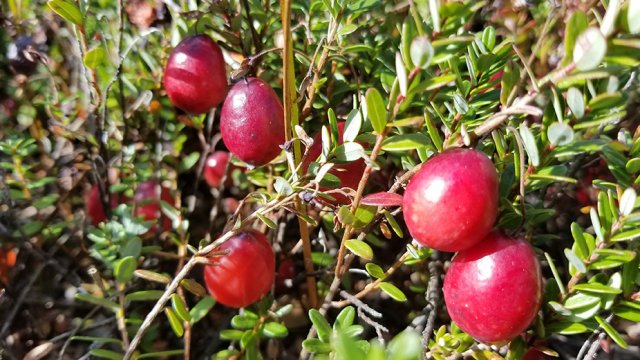Wisconsin is the largest producer of cranberries— with over half of the U.S. production in 2020.
However, at the Wisconsin Cranberry Research Station, production of cranberries have been low the past couple years.
“Warm spells during the middle of the winter might melt some of the snow and expose the plant tissue to low temperatures and wind followed by really cold temperatures has resulted in yield lost,” says Amaya Athucham, a professor at the University of Wisconsin. "That’s something we’ve seen and something we expect to see more and more.”
That is why this research station exists. It conducts experiments on cranberries to make them more sustainable for production, among many other features.
“There’s a lot of potential to untap the genetics in the cranberry vine itself to take a look at things as frost tolerance, disease resistance, insect resistance, to make the plant more sustainable,” says Lochner. “Our growers have been growing cranberries since the 1800s, and they’re committed to being economically and environmentally sustainable to pass it onto the next generation."
According to Hilary Sandler at the University of Massachusetts, climate change is a driving factor for lack of production.
“This year, during July, we had a lot of warm temperatures, a lot of rainfall, and that creates the perfect conditions for fungi to thrive,” Sandler says. “And those are the ones who cause fruit rot, for the most part.”
Amaya Atucham, a professor at the University of Wisconsin, is conducting experiments on cranberry plants to see how to make them more adaptable to cold weather.
“If we can identify individuals that have higher tolerance to cold – we can make crosses with other individuals and make new cultivars that we can provide to growers,” Atucham says. “We don’t do any GMOs. We just try to find diversity – that’s why it’s important to protect the diversity of these plants. We can find individuals that might have the strength of higher cold hardiness and then we can cross them to create new cultivars.”
When it comes to environmental problems, it trickles into economic problems. Less production means less economic gains for farmers. That is why the research station is working around the clock to improve cranberry farming to make it more sustainable for the economy.
“Having that partnership and working together to identify what are the problems that the industry have. How to be more sustainable environmentally but economically as well,” Atucham says. “How can we do that research to help the industry move forward is key to the success of the challenges we have in the future. This is only getting to get harder, so the solution to that is working together and doing research to find answers.”
This story was originally published on Newsy.com.




